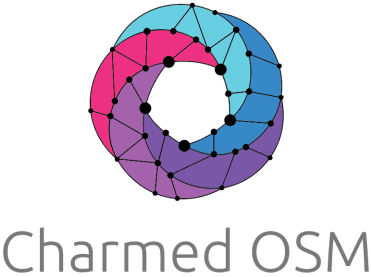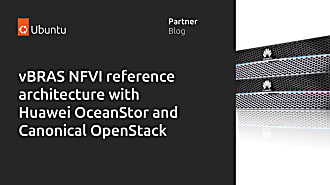Alex Chalkias
on 5 June 2020
OSM#9 Hackfest: the highlights
Canonical concluded its participation in the 9th OSM Hackfest with a renewed sense of fellowship with the Open Source MANO (OSM) community and great pride in the collaborative work that enabled an end-to-end mobile network orchestration demo using OSM’s model-driven capabilities to onboard network services. Following the successful organisation of the previous hackfest in Madrid in March, this week’s hackfest was held in a remote format, with greater attendance, as OSM is becoming an increasingly advanced project.
OSM#9 hackfest: new format
For this hackfest, the organisers decided to change the structure in a way that would facilitate hands-on sessions; with attendees playing with technology to learn and unlock new capabilities and skills – staying true to the very nature of a hackfest The event spanned three days of theory and workshop sessions, with an extra day for ecosystem-related presentations and leadership, and technical sessions happening in a parallel track for the full week.
The overall experience was great with active participation and every session felt like adding a piece to the puzzle to highlight the benefits that OSM can bring to telcos in a landscape that is rapidly moving towards network function virtualisation and containerisation. Participants were introduced to the end-to-end hackfest scenario on the first day. The next two days were all about how to deploy and operate network functions on physical machines (PNFs), virtual machines (VNFs) and Kubernetes-managed containers (KNFs), and how to do network slicing, auto-scaling and testing. Slides from all sessions can be found on the OSM wiki.

Canonical at the OSM#9 Hackfest
Canonical’s OSM team was fully present at the hackfest, both as session presenters and as participants to the leadership and technical sessions. Mark Beierl, the OSM DevOps module design lead (MDL), drove the day 1 session that introduced the hackfest scenario. The scenario used Facebook’s Magma opensource mobile network solution and linked it to OSM to demonstrate its management and orchestration (MANO) capabilities.
David Garcia, the N2VC MDL, started day 2 with an introduction to OSM’s orchestration actions, or primitives as these are referred to by telcos. OSM leverages Juju charms’ model-driven approach to drive lifecycle management, workload configuration, daily operations and integration functions.
Day 2 continued with Garcia leading two workshops on VNF and PNF onboarding using charms. Removing operational complexity is not the only benefit of charms. Charms allow reuse of the same code to drive operations on multiple substrates, something that can be very common in telecommunications, with most vendors having to deal with legacy infrastructure alongside virtualised datacenters and software-defined solutions. Day 2 wrapped up with a workshop on KNF onboarding, led by Dominik Fleischmann from Canonical, that showcased the use of charms to onboard network functions on containers.

Canonical’s presence at the OSM#9 Hackfest was concluded on day 4 with an interactive session led by Product Manager, Alex Chalkias. This ‘OSM in Production’ session, in line with the overall vision of the OSM community for a production-grade OSM, was a brainstorm to address feedback from the field and telco requirements in production environments, such as high availability, security, geo-redundancy and disaster recovery.
Leadership and technical sessions
Canonical has a strong presence in the OSM leadership team, with CEO Mark Shuttleworth being a technical steering committee (TSC) member plus Beierl and Garcia from Canonical’s OSM engineering team as MDLs. Canonical’s vision is to bring better economics for data centres by providing smarter operations at a better price. This vision is very appealing to telecommunications providers that face complex network operations at scale. Our engagement in OSM aims at driving comprehensive design choices to drive better code and operations.
During the technical sessions, we presented the latest version of the OSM installer. The installer is able to deploy OSM using upstream OSM charms in high-availability mode on a user-provided Kubernetes, bootstrap a LXD cluster and link it to a virtual infrastructure manager (VIM) such as an Openstack cloud. Similarly, the installer can deploy OSM on a single-node, using Microk8s as the K8s substrate. The technical sessions also addressed the roadmap plan for OSM Release EIGHT that should be available in July 2020 and defined upcoming features to address production readiness. This marks an inflection point in OSM as the project enters a more mature stage.
The OSM Ecosystem Day sessions
An essential part of every OSM hackfest, the Ecosystem Day is an opportunity for the community to learn about vendor-oriented solutions and projects. This time we learned more about network slicing, service assurance and the shift towards a 5G Open Core for Telco NFV. We also presented a session about OSM production readiness that neatly tied up with the previous production-focused discussions.
OSM#9 Hackfest: Key takeaway
As the OSM project moves forward towards production, the ecosystem is able to acknowledge its strengths and weaknesses. The community is now better positioned than ever to improve the former and address the latter to make OSM a key component in the telco NFV landscape.
The next hackfest date and content are yet to be finalised, with September 7-11th being the most plausible timeframe. We will be looking forward to seeing you there.



